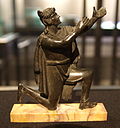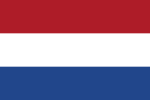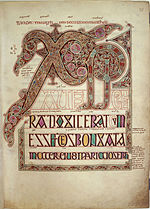The term Romano-Germanic describes the conflation of Roman culture with that of various Germanic peoples in areas successively ruled by the Roman Empire... 5 KB (454 words) - 06:54, 6 March 2024 |
Romano-Germanic may refer to: Romano-Germanic culture of ancient Germanic peoples subject to the Roman Empire Romano-Germanic law, a family of legal systems... 957 bytes (157 words) - 07:30, 22 August 2022 |
 | The Germanic peoples were historical groups of people that once occupied Northwestern and Central Europe and Scandinavia during antiquity and into the... 163 KB (20,172 words) - 13:40, 20 April 2024 |
Law would come from a *kanab- form, but this loanword preceded Romano-Germanic culture. A reconstructed PIE *b is evident in Latin cannabis (Vulgar Latin... 15 KB (1,816 words) - 19:53, 21 April 2024 |
 | Visigoths (category Early Germanic peoples) generally rectangular in shape, with copper alloy, garnets and glass. Romano-Germanic culture Thiufa Goths Visigothic kingdom Visigothic art and architecture... 63 KB (8,177 words) - 15:56, 22 April 2024 |
 | European dances European Heritage Day Europeanisation Romano-Germanic culture Western culture Westernization Mason, D. (2015). A Concise History of Modern... 69 KB (7,089 words) - 06:56, 6 March 2024 |
 | The West Germanic languages constitute the largest of the three branches of the Germanic family of languages (the others being the North Germanic and the... 57 KB (4,752 words) - 23:00, 22 April 2024 |
 | the language and culture of most of what became England from Romano-British to Germanic. This process principally occurred from the mid-fifth to early... 170 KB (23,521 words) - 16:54, 26 March 2024 |
Arcinazzo Romano Barbarano Romano Castel San Pietro Romano Cineto Romano Magliano Romano Mazzano Romano Monte Romano Montorio Romano Olevano Romano Ponzano... 2 KB (329 words) - 14:08, 10 October 2022 |
mythology, legendry, and folk beliefs of early Germanic culture. By way of the comparative method, Germanic philologists, a variety of historical linguist... 72 KB (1,709 words) - 02:57, 14 December 2023 |
from what they viewed as "intellectual colonization" from the Romano-Germanic cultures of Western Europe. Czarist vostochniki like the philosopher Konstantin... 47 KB (4,876 words) - 10:27, 16 April 2024 |
The Hidden Frontier (category Culture of South Tyrol) Europe Ethnolinguistic group History of the Alps History of Tyrol Romano-Germanic culture Jaro Stacul, The Bounded Field: Localism and Local Identity in... 4 KB (507 words) - 08:24, 25 April 2022 |
Alaisiagae (category Germanic goddesses) In Romano-British culture and Germanic polytheism, the Alaisiagae /ˌæliəˈsaɪəˌdʒiː/ (possibly "dispatching terrors" or "all-victorious") were a quartet... 6 KB (703 words) - 18:24, 5 March 2024 |
 | Ēostre (category Articles containing Proto-Germanic-language text) continental Germanic names include the element, including Austrechild, Austrighysel, Austrovald, and Ostrulf. In 1958, over 150 Romano-Germanic votive inscriptions... 38 KB (4,768 words) - 20:19, 5 April 2024 |
Hercules Magusanus (category Germanic deities) Hercules Magusanus is a Romano-Germanic deity or hero worshipped during the early first millennium AD in the Lower Rhine region among the Batavi, Marsaci... 10 KB (1,263 words) - 01:44, 3 February 2024 |
 | Matres and Matronae (redirect from Germanic mothers) the Matribus Gallaicis "to the Galician Mothers"; and also in the Romano-Celtic culture of Pannonia in the form of similar reliefs and inscriptions to the... 6 KB (646 words) - 01:08, 16 March 2024 |
 | Celts (redirect from Ancient Celtic culture) Empire. By c. 500, due to Romanisation and the migration of Germanic tribes, Celtic culture had mostly become restricted to Ireland, western and northern... 146 KB (16,575 words) - 03:51, 31 March 2024 |
 | Netherlands (redirect from Political culture of the Netherlands) identity and language, neither Germanic nor Celtic, survived in the Netherlands until the Roman period, the Nordwestblock culture. The first author to describe... 207 KB (20,110 words) - 03:19, 25 April 2024 |
*Kóryos (section Germanic tradition) communities because of their military nature. Among the Batavi, the Romano-Germanic god Hercules Magusanus was likely regarded as the patron and protector... 49 KB (5,901 words) - 20:32, 15 March 2024 |
 | Anglo-Saxons (redirect from Anglo-Saxon culture) out of the interaction of these settlers with the pre-existing Romano-British culture. Over time, most of the people of what is now southern, central... 189 KB (26,008 words) - 19:05, 1 April 2024 |
 | region in this period. The Reihengräber culture, which developed within north-eastern Gaul under Romano-Germanic settlement during the fifth century, was... 17 KB (1,916 words) - 04:58, 5 April 2024 |
 | Roman salute (redirect from Saluto romano) the Roman salute employed by Fascist Italy, and hence on it not being Germanic. In response, efforts were made to establish its pedigree and invent a... 66 KB (7,475 words) - 13:57, 22 April 2024 |








